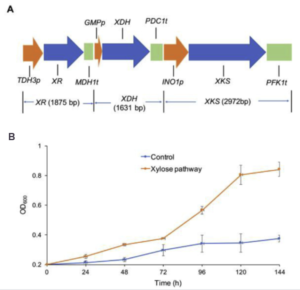Photoenzymatic Enantioselective Intermolecular Radical Hydroamination
Themes: Conversion
Keywords: Catalysis
Citation
Zhang, Z., Feng, J., Yang, C., Cui, H., Harrison, W., Zhong, D., Wang, B., Zhao, H. July 31, 2023. Data from: “Photoenzymatic Enantioselective Intermolecular Radical Hydroamination.” University of Illinois Urbana-Champaign. DOI: 10.13012/B2IDB-1856729_V1.
Overview

Since the discovery of Hofmann–Löffler–Freytag reaction more than 130 years ago, both the structure and reactivity of nitrogen-centred radicals have been widely studied. Nevertheless, catalytic enantioselective intermolecular radical hydroamination remains a challenge due to the existence of side reactions, the short lifetime of nitrogen-centred radicals and lack of understanding of the fundamental catalytic steps. In the laboratory, nitrogen-centred radicals are produced with radical initiators, photocatalysts or electrocatalysts. In contrast, their generation and reaction are unknown in nature. Here we report a pure biocatalytic system for the photoenzymatic production of nitrogen-centred radicals and enantioselective intermolecular radical hydroaminations by successfully repurposing an ene-reductase through directed evolution. These reactions progress efficiently at room temperature under visible light without any external photocatalysts and exhibit excellent enantioselectivities. A detailed mechanistic study reveals that the enantioselectivity originates from the radical-addition step while the reactivity originates from the ultrafast photoinduced electron transfer from reduced flavin mononucleotide to nitrogen-containing substrates.
Data
Illinois Data Bank includes:
- Condition optimization
- Control experiments
- Reaction outcomes